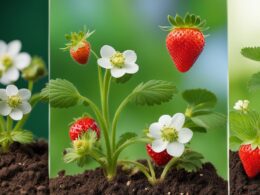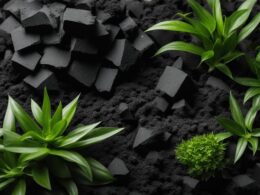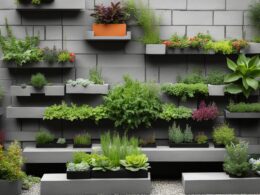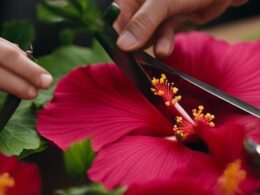If you are considering planting a maple tree in your yard, it’s important to understand the growth rate of different maple species. The growth rate of maple trees can vary depending on the species and several other factors. By knowing the growth rates, you can make an informed decision and choose the right maple tree for your landscape.
Maple trees are known for their beautiful foliage and vibrant colors in the fall. They come in various species, each with its own unique growth characteristics. Let’s explore the growth rates of different maple trees and factors that can influence their growth.
Factors Affecting Maple Tree Growth Rate
When it comes to the growth rate of maple trees, several factors come into play. Environmental conditions play a significant role in determining how quickly these majestic trees will grow. The availability of sunlight, soil conditions, and climate all impact the growth rate of maple trees.
For instance, red maple trees thrive in full sunshine and can adapt to various soil types. These trees are less affected by extreme temperatures, able to withstand both hot and cold weather. This adaptability contributes to their relatively fast growth rate.
While sunlight and soil conditions are important factors, other considerations can also impact maple tree growth rate.
- Alternate Bearing: Maple trees, like many other species, may experience alternate bearing, a phenomenon where they produce an abundance of seeds in one year and only a few in the next. This can affect the overall growth rate of the tree.
- Seed Availability: The availability of viable seeds also impacts the growth rate of maple trees. A lack of viable seeds can slow down their growth or even prevent new trees from sprouting.
Understanding these factors that affect maple tree growth rate can help you make informed decisions when planting and maintaining maple trees in your landscape. By providing the right environmental conditions and considering factors like alternate bearing and seed availability, you can cultivate healthy maple trees with optimal growth rates.
Choosing the Right Maple Tree for Your Yard
When selecting a maple tree for your yard, it’s important to consider several factors. By choosing the right maple tree, you can enhance the beauty of your yard and create a stunning landscape. Take into account the growth rate, space requirements, sunlight needs, and suggested soil conditions for each species. Here are some popular choices known for their vibrant fall colors:
- Red maples: These trees have a medium growth rate and are suitable for most yards. They can grow to impressive heights with time.
- Japanese maples: With a slower growth rate, Japanese maples are perfect if you prefer a more compact tree. They add an elegant touch to any yard.
- Sugar maples: If you’re patient and want a majestic tree, sugar maples are an excellent choice. They have a slow to medium-paced growth rate and can reach impressive heights over time.
- October Glory maples: For those who desire a faster-growing tree, October Glory maples are an ideal option. Their relatively fast growth rate allows them to establish quickly in your yard.
Each maple tree species has its own height potential and growth rate. It’s crucial to choose a maple tree that complements your yard’s requirements and desired aesthetic. Before making a decision, assess the available space in your yard, as some maple trees may require more room to grow. Additionally, consider the amount of sunlight your yard receives and the type of soil you have.
By carefully choosing the right maple tree for your yard, you can enjoy the beauty of vibrant fall colors and create an inviting and picturesque outdoor space.
Conclusion
Maple tree growth rates vary depending on the species. If you’re looking for a fast-growing maple tree, consider the red maple. With a growth rate of 12-18 inches per year, red maples can quickly fill out your landscape. On the other hand, if you prefer a slower-growing maple tree, options like sugar maples and Japanese maples are great choices. These species may take longer to reach their mature height, but they offer their own unique beauty and characteristics.
It’s important to remember that the growth rate of maple trees can be influenced by various factors. Environmental conditions, such as sunlight, soil conditions, and climate, can all impact a maple tree’s growth rate. Additionally, factors like alternate bearing and the availability of viable seeds can also play a role. So, when choosing a maple tree for your yard, take into account these factors along with the growth rate. Consider the space required for growth, the sunlight needs, and the recommended soil conditions to ensure a successful and thriving maple tree in your yard.
By understanding the growth rates of different maple species and considering the various factors that can affect growth, you can make an informed decision when choosing the right maple tree for your landscape. Whether you select a fast-growing red maple or a slower-growing Japanese maple, each species brings its own unique charm and beauty to your outdoor space. So, plant your maple tree with care, provide it with the optimal conditions, and watch as it grows into a stunning centerpiece of your yard.
How Does Sugar Maple Tree Bark Feature Affect Its Growth Rate?
The sugar maple bark features understanding is crucial for assessing the tree’s growth rate. The bark serves as protection and affects the tree’s ability to withstand environmental stressors. A healthy bark promotes healthy growth, while damage or disease can slow down the overall growth rate of the sugar maple tree.










